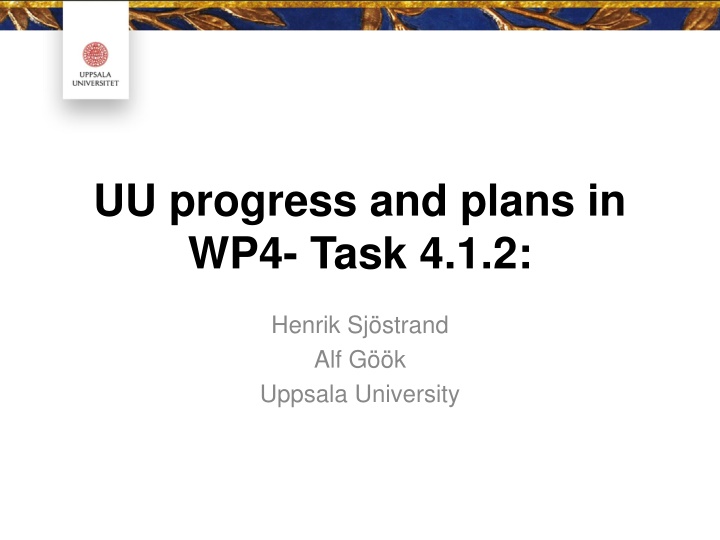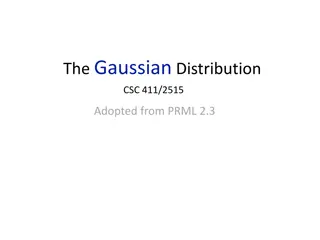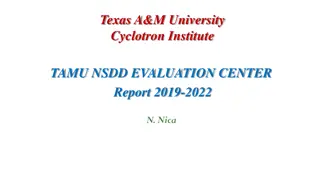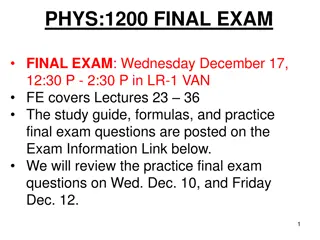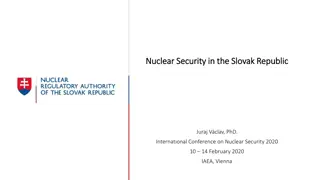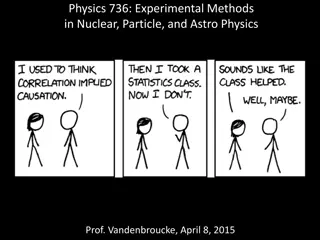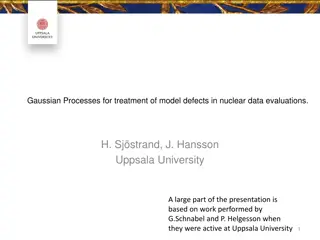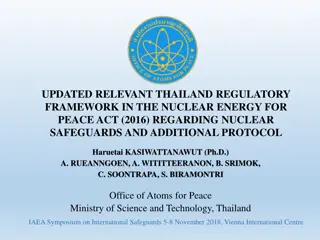Enhancing Nuclear Data Evaluation with Gaussian Processes
Uppsala University is investing efforts in developing the TENDL methodology to incorporate model defect methods for nuclear data evaluations. By leveraging Gaussian Processes and Levenberg-Marquardt algorithm, they aim to improve the accuracy and reliability of calibration data to produce justified co-variances for evaluated nuclear data. Various references and techniques are employed to address energy-dependent parameters and model defects in nuclear data evaluations.
Download Presentation

Please find below an Image/Link to download the presentation.
The content on the website is provided AS IS for your information and personal use only. It may not be sold, licensed, or shared on other websites without obtaining consent from the author.If you encounter any issues during the download, it is possible that the publisher has removed the file from their server.
You are allowed to download the files provided on this website for personal or commercial use, subject to the condition that they are used lawfully. All files are the property of their respective owners.
The content on the website is provided AS IS for your information and personal use only. It may not be sold, licensed, or shared on other websites without obtaining consent from the author.
E N D
Presentation Transcript
UU progress and plans in WP4- Task 4.1.2: Henrik Sj strand Alf G k Uppsala University
What was promised The Uppsala University (UU) has also recently invested large efforts in studying the possibility of using model defect methods in evaluations. In this context, UU will combine its resources with the previous partners. To continue to develop the so-called TENDL methodology, by including new functionality to treat model defects and inconsistent experimental data. This will allow incorporating reliable and quantitative methods for the use of calibration data and hence produce justified co- variances for the evaluated nuclear data.
Evaluation system Evaluation pipleine Gaussian Processes discrepancy function with zero mean Experiments Model rule-based covariances To treat model defects: Gaussian processes for energy-dependent parameters uncertainty correction (MLO) Non linear problem: Levenberg-Marquardt algorithm H = 1 P upd Partly adapted from: Georg Schnabel | ND 2019 | Beijing | 2019-5-21 | Page 3 / 20
Main reference [1] G. Schnabel, H. Sj strand, J. Hansson, D. Rochman, A. Koning, and R. Capote, Conception and Software Implementation of a Nuclear Data Evaluation Pipeline, Nuclear Data Sheets, vol. 173, pp. 239 284, Mar. 2021, doi: 10.1016/j.nds.2021.04.007. New addition 2021 New functionality in the GP discrepancy function Pseudo-data using heteroscedastic GP
GP in the parameter domain Energy-dependent parameters1,2around global parameters The energy-dependence modeled with GP ??= ? ??;? + ?(??) + ? ; ??(?) ?? At each E: Consistent physics Meaningful parameters [1] P. Helgesson and H. Sj strand, Treating model defects by fitting smoothly varying model parameters: Energy dependence in nuclear data evaluation, Annals of Nuclear Energy, vol. 120, pp. 35 47, Oct. 2018, doi: 10.1016/j.anucene.2018.05.026. [2] G. Schnabel, H. Sj strand, J. Hansson, D. Rochman, A. Koning, and R. Capote, Conception and Software Implementation of a Nuclear Data Evaluation Pipeline, Nuclear Data Sheets, vol. 173, pp. 239 284, Mar. 2021, doi: 10.1016/j.nds.2021.04.007. 5
Adding Gaussian Process in the observable domain Gaussian Processes discrepancy function with zero mean Experiments Model To treat model defects: Gaussian processes for energy-dependent parameters LM + ( ) ( ) = f E + + ; y E j j j m A GP model describes the deviation between the model and the exp. (model defect) The GP model is not added to the evaluated TALYS model avoid the momentous bookkeeping (sum rules) GP - covariance structure retained in the in the Levenberg-Marquart algorithm
Results (n,p) (26 FE 56(N,P)25 MN 56 8
(n,el) Model constrained where we have data. Not constrained where there is no data. 9
Some features that we do not understand (n,d) 10
Plans for the pipeline Within SANDA WP4 1. Addressing some unexplained features. 2. Generalize the pipeline to more isotopes. 3. Improve integration with T6. 4. 2- 5 MeV region Improving the adoption of other libraries. Developing new methodologies to handle this region. Possible candidate is the GP in observable space. Possibly to build on experience in [1] Outside SANDA 1. Update the calibration procedure to include integral information 2. Integration of results from WPEC- SG 49 (curated experimental databases) 3. Renormalization of experimental data in the EXFOR library according to the newest evaluations of monitor reactions [1] G. Schnabel, R. Capote, A. Koning, and D. Brown, Nuclear data evaluation with Bayesian networks, arXiv:2110.10322 [nucl-ex, physics:nucl-th, physics:physics], Oct. 2021, Accessed: Mar. 11, 2022. [Online]. Available: http://arxiv.org/abs/2110.10322
